Dmitrii Zendrikov
Waves and symbols in neuromorphic hardware: from analog signal processing to digital computing on the same computational substrate
Feb 27, 2025Abstract:Neural systems use the same underlying computational substrate to carry out analog filtering and signal processing operations, as well as discrete symbol manipulation and digital computation. Inspired by the computational principles of canonical cortical microcircuits, we propose a framework for using recurrent spiking neural networks to seamlessly and robustly switch between analog signal processing and categorical and discrete computation. We provide theoretical analysis and practical neural network design tools to formally determine the conditions for inducing this switch. We demonstrate the robustness of this framework experimentally with hardware soft Winner-Take-All and mixed-feedback recurrent spiking neural networks, implemented by appropriately configuring the analog neuron and synapse circuits of a mixed-signal neuromorphic processor chip.
Genetic Motifs as a Blueprint for Mismatch-Tolerant Neuromorphic Computing
Oct 25, 2024Abstract:Mixed-signal implementations of SNNs offer a promising solution to edge computing applications that require low-power and compact embedded processing systems. However, device mismatch in the analog circuits of these neuromorphic processors poses a significant challenge to the deployment of robust processing in these systems. Here we introduce a novel architectural solution inspired by biological development to address this issue. Specifically we propose to implement architectures that incorporate network motifs found in developed brains through a differentiable re-parameterization of weight matrices based on gene expression patterns and genetic rules. Thanks to the gradient descent optimization compatibility of the method proposed, we can apply the robustness of biological neural development to neuromorphic computing. To validate this approach we benchmark it using the Yin-Yang classification dataset, and compare its performance with that of standard multilayer perceptrons trained with state-of-the-art hardware-aware training method. Our results demonstrate that the proposed method mitigates mismatch-induced noise without requiring precise device mismatch measurements, effectively outperforming alternative hardware-aware techniques proposed in the literature, and providing a more general solution for improving the robustness of SNNs in neuromorphic hardware.
Neuromorphic dreaming: A pathway to efficient learning in artificial agents
May 24, 2024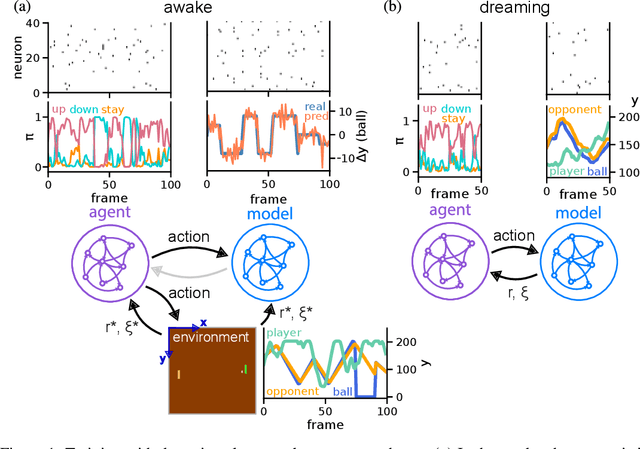
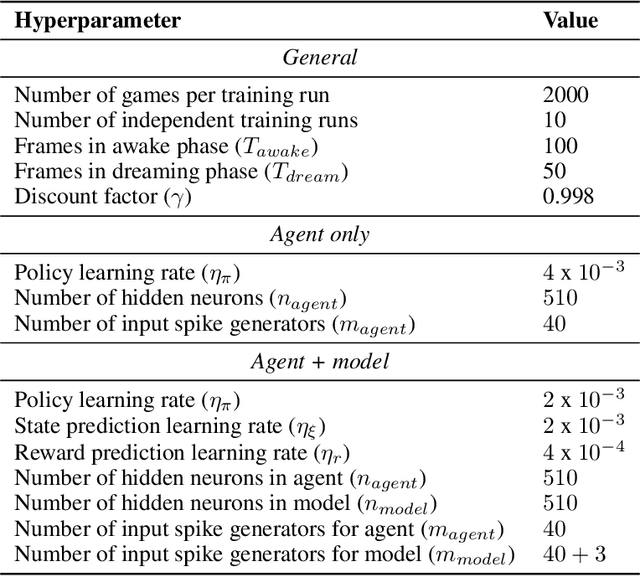

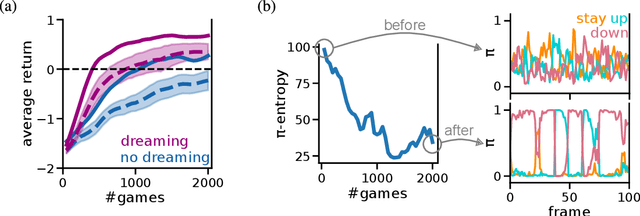
Abstract:Achieving energy efficiency in learning is a key challenge for artificial intelligence (AI) computing platforms. Biological systems demonstrate remarkable abilities to learn complex skills quickly and efficiently. Inspired by this, we present a hardware implementation of model-based reinforcement learning (MBRL) using spiking neural networks (SNNs) on mixed-signal analog/digital neuromorphic hardware. This approach leverages the energy efficiency of mixed-signal neuromorphic chips while achieving high sample efficiency through an alternation of online learning, referred to as the "awake" phase, and offline learning, known as the "dreaming" phase. The model proposed includes two symbiotic networks: an agent network that learns by combining real and simulated experiences, and a learned world model network that generates the simulated experiences. We validate the model by training the hardware implementation to play the Atari game Pong. We start from a baseline consisting of an agent network learning without a world model and dreaming, which successfully learns to play the game. By incorporating dreaming, the number of required real game experiences are reduced significantly compared to the baseline. The networks are implemented using a mixed-signal neuromorphic processor, with the readout layers trained using a computer in-the-loop, while the other layers remain fixed. These results pave the way toward energy-efficient neuromorphic learning systems capable of rapid learning in real world applications and use-cases.
Supervised training of spiking neural networks for robust deployment on mixed-signal neuromorphic processors
Feb 17, 2021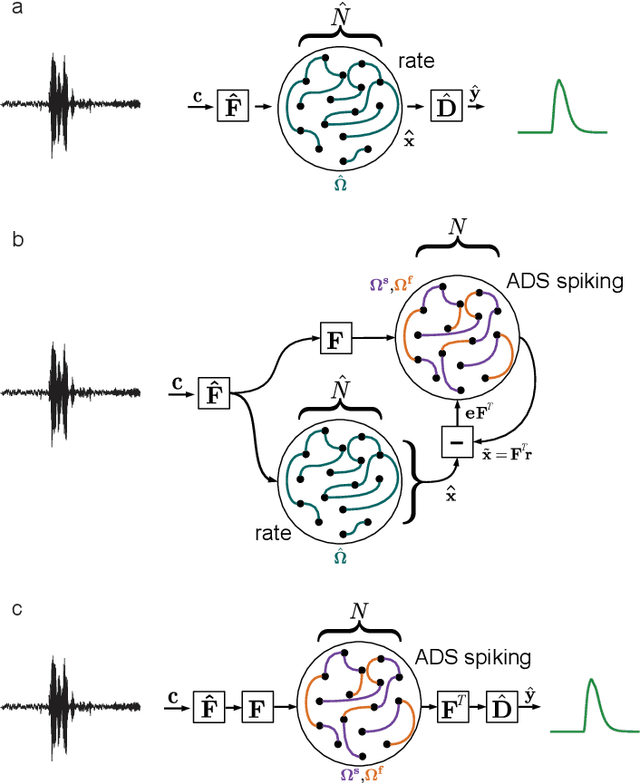
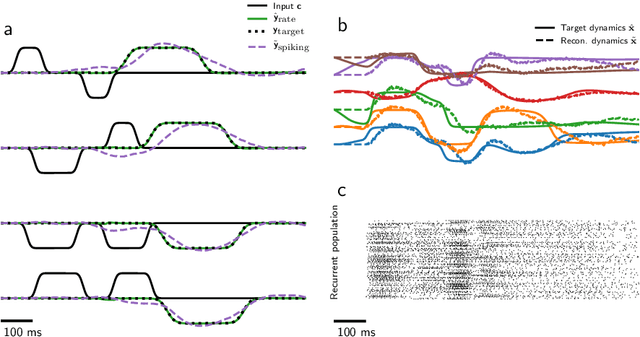
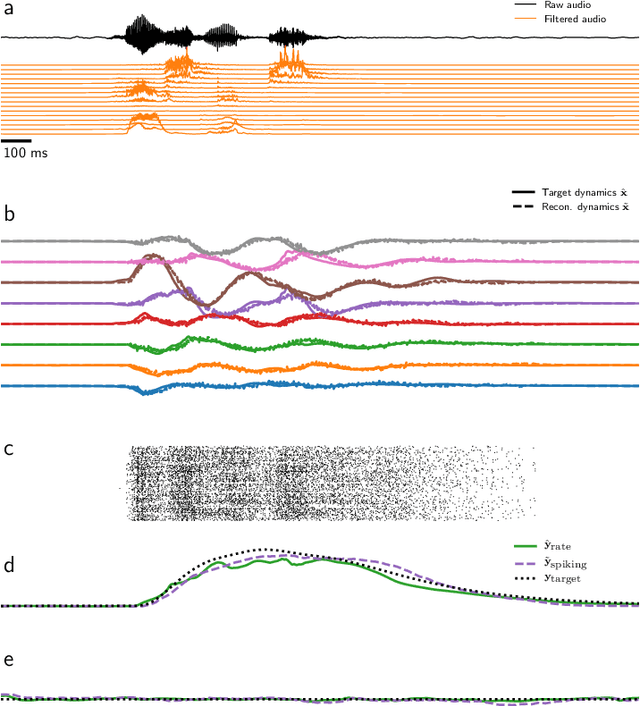
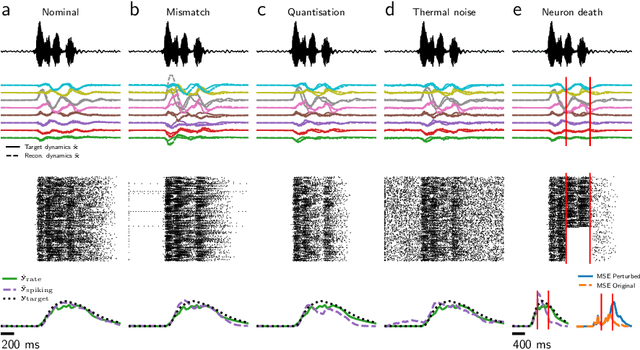
Abstract:Mixed-signal analog/digital circuits can emulate spiking neurons and synapses with extremely high energy efficiency, an approach known as "neuromorphic engineering". However, analog circuits are sensitive to process-induced variation among transistors in a chip ("device mismatch"). For neuromorphic implementation of Spiking Neural Networks (SNNs), mismatch causes parameter variation between identically-configured neurons and synapses. Each chip therefore exhibits a different distribution of neural parameters, causing deployed networks to respond differently between chips. Current solutions to mitigate mismatch based on per-chip calibration or on-chip learning entail increased design complexity, area and cost, making deployment of neuromorphic devices expensive and difficult. Here we present a supervised learning approach that addresses this challenge by maximizing robustness to mismatch and other common sources of noise. Our method trains SNNs to perform temporal classification tasks by mimicking a pre-trained dynamical system, using a local learning rule adapted from non-linear control theory. We demonstrate our method on two tasks requiring memory, and measure the robustness of our approach to several forms of noise and mismatch. We show that our approach is more robust than several common alternatives for training SNNs. Our method provides a viable way to robustly deploy pre-trained networks on mixed-signal neuromorphic hardware, without requiring per-device training or calibration.
 Add to Chrome
Add to Chrome Add to Firefox
Add to Firefox Add to Edge
Add to Edge